In the late 1950s, New Zealand marine technology company HamiltonJet pioneered the application of waterjet propulsion for small and medium-sized craft. Waterjet propulsion was the ideal alternative to a conventional propeller drive for boats operating in shallow water, and quickly found favor among skippers of boats plying New Zealand's many shallow, rocky rivers.
Since then, HamiltonJet has grown to become the world's biggest supplier of waterjet propulsion and control systems, with over 40% market share worldwide – some 97% of its sales are to export markets. Its sophisticated AVX platform provides the basis for a growing range of skipper assistance and auto-pilot functions, all of which depend on accurate and robust technology for tracking a vessel's position and its movement in the water.
A crucial role in this platform is played by an MTi-2 motion tracker from Xsens, providing real-time measurements of roll and pitch to enable the HamiltonJet system to fix the position of a vessel on the water. This is the story of the HamiltonJet technology, and the MTi motion tracker's role in it.
Innovative propulsion system enables accurate station keeping
Today, waterjets propel a wide range of service boats which require very high maneuverability, benefit from high efficiency at high speed, or operate in shallow waters. Typical users of HamiltonJet propulsion systems include police patrol boats, service vessels supporting wind farms, rescue and fire service boats, recreational and tourist boats, and military vessels.
One of the most apparent differences between a waterjet propulsion system and propeller systems is the quick and easy control of the direction and power of the thrust. A HamiltonJet propulsion system can completely reverse the direction of thrust in less than two seconds.
This property of waterjet propulsion enabled HamiltonJet to develop a sophisticated system for automatically performing 'station keeping' – the mariner's term for staying motionless on the surface of the water while maintaining a constant heading.
Its JETanchor product for station keeping, or providing a 'virtual anchor', is an optional feature of the AVX propulsion control system. Playing a vital role in the JETanchor's position sensing system is an MTi-2 Vertical Reference Unit (VRU) from Xsens.

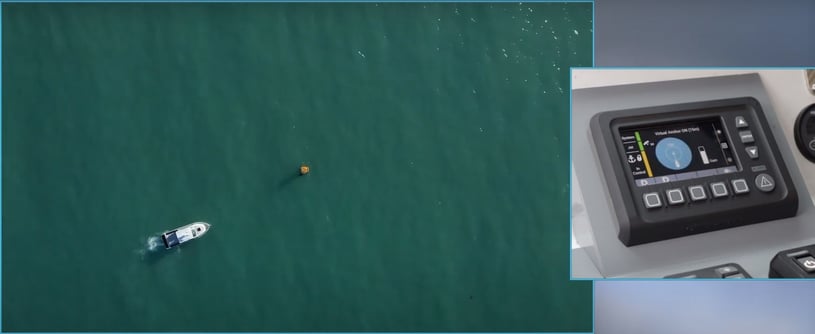
Compensation for satellite positioning signal error
The JETanchor product enables the skipper to hold the vessel steady at the push of a button. The system has to know the absolute position of the vessel. Of course, technology for monitoring the position of an object is readily available: Global Navigation Satellite System (GNSS) positioning signals are capable of high accuracy and precision.
The JETanchor system uses dual satellite receivers. Each is mounted on a mast to maintain a clear line of sight to the Global Positioning System (GPS) constellation. The satellite receivers provide position data accurate to a few tens of centimeters, as well as reliable measurements of heading and, when the vessel is in motion, velocity.
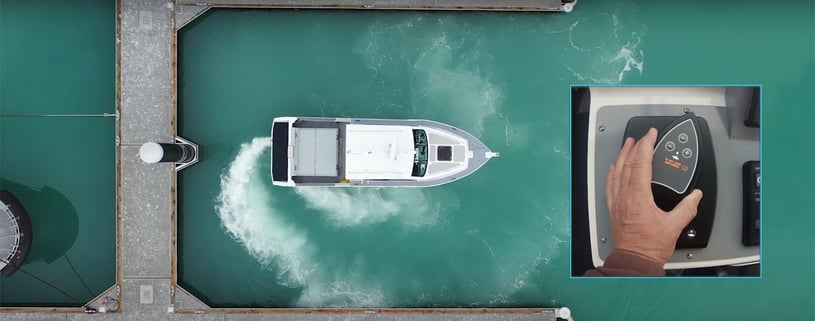
As accurate as the dual GPS signals are, however, they are not sufficient for the JETanchor system to meet the high performance standards that HamiltonJet sets for its propulsion control products, chiefly because of the nature of operation on water. At sea, boats are rocked almost constantly by the motion of the wind and waves. An unmoored boat is never completely still.
The effect of roll and pitch is amplified by the GPS receivers' mounted position high up on masts. In heavy seas, the action of roll and pitch can cause receivers mounted on tall masts to detect movement of several meters from one side of the mast's arc of motion to the other, while the dead center of the hull remains motionless.
In other words, this swinging of the mast introduces error into the GPS signal. The role of the MTi-2 VRU is to measure the hull's roll and pitch. Once the mounting positions of the GPS receivers and of the VRU are programmed into the AVX control system, sophisticated JETanchor algorithms apply calculations in real time to cancel out the error in the GPS signals induced by movement of the water, resulting in a clean position signal. This then enables the waterjet propulsion system to minutely adjust the position of the hull on the water at a rate of ten times per second.
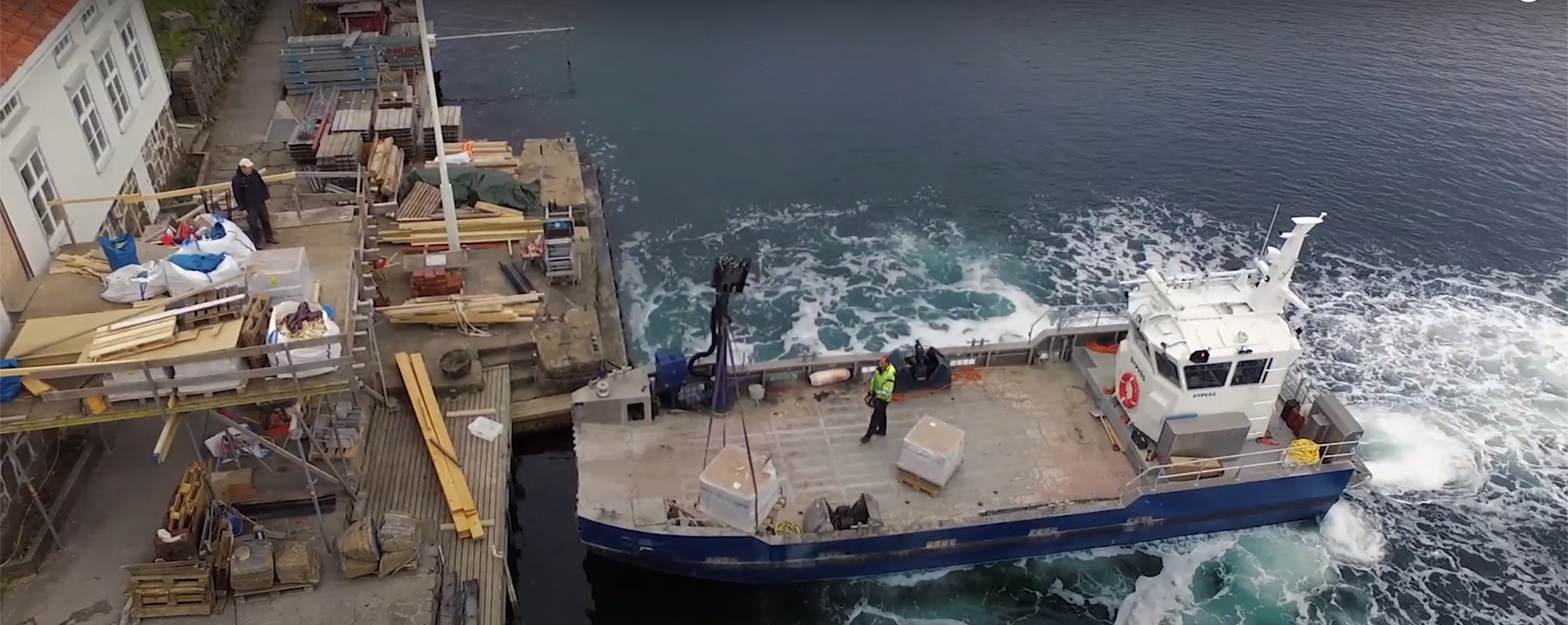
According to CJ Johansson, Senior Systems Engineer at HamiltonJet, a crucial feature of the Xsens VRU is its measurement stability even when subject to vibration – an ever-present phenomenon affecting the operation of motion trackers mounted on a vessel. He says, ‘Xsens implements very effective Kalman filtering technology in its sensor modules which automatically cancels out the effect of random vibrations induced by phenomena such as the impact of waves on the hull, or the operation of the boat's engine. This vibration filtering means that we can use the roll and pitch signal outputs from the MTi-2 motion tracker with great confidence. It also leaves the main AVX control system free to implement its principal control functions, without having to perform error compensation of the roll/pitch signal.’
The accuracy and stability of the MTi-2 VRU play a crucial role in enabling the JETanchor product to achieve high performance. It can typically maintain a vessel's position to within 1m at sea. System tests have demonstrated the system's ability to maintain a cargo vessel's station 1m from a wharf while a 1 tonne load of bricks was lifted by crane to shore.
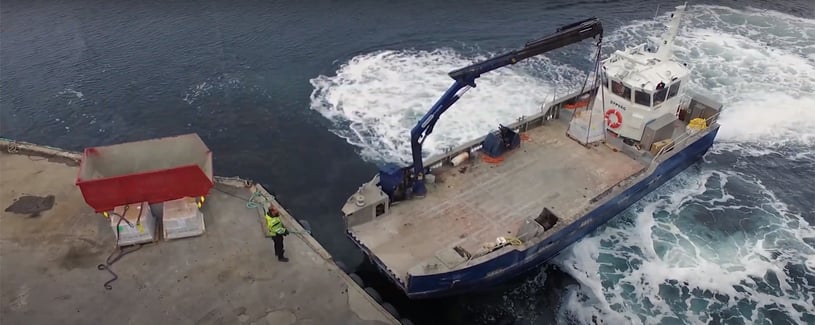
Ben Reed, CEO of HamiltonJet, says: ‘Our goal in developing the JETanchor product was to bring station keeping to mainstream vessels. In large commercial vessels and ferries, station keeping is a feature which can cost as much as $0.5m to install. JETanchor is typically priced at less than 10% of this, yet its performance in a waterjet propulsion system rivals that of much more expensive systems. JETanchor's outstanding performance is a tribute to the skill and ingenuity of our engineering team, and to the quality of the technology inside it – including the affordable yet high-performance MTi motion tracker supplied by Xsens.’
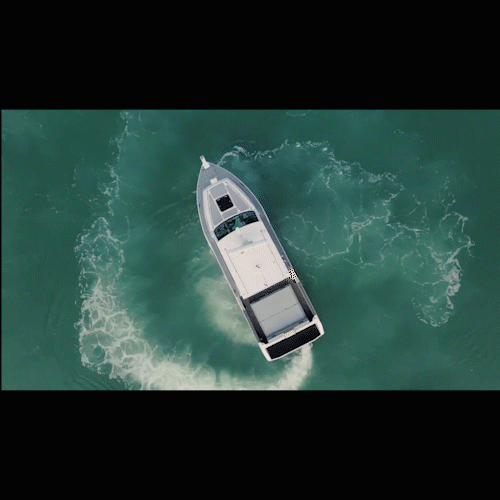
To find out more about HamiltonJet and its JETanchor station keeping product, go to www.hamiltonjet.com/global/jetanchor.
Choosing your product
Want to know the right inertial measurement unit for your application? Try our recommendation tool and find out what MTi you need by answering just 3 questions.
